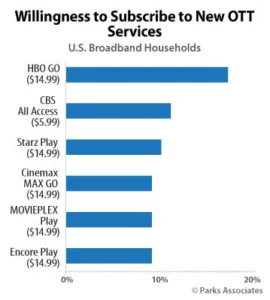Last year Verizon announced plans for an OTT service to be launched in 2015. During the latest earnings announcement, Verizon responded to questions about the OTT service by saying that they see the subscription model for OTT services as a model being pursued by many other players as well. They were most likely referring to the Sling TV option from Dish Network (DISH unveils Sling TV OTT), as well as options from CBS, HBO, and others.
With Verizon FIOS as a typical linear TV provider, Verizon is planning something different with its new service. According to EVP & CFO, Fran Shammo, Verizon is looking at two different delivery mechanisms; LTE Multicast and the internet. While the internet is pretty straight forward and addressing the typical “cable cutter” today, LTE Multicast is planned around mobile video delivery.
Verizon has not made any clear statements on what the new OTT service will exactly look like (and if it even uses LTE Multicast). They did however state that they see a change in the willingness of content providers to discuss new distribution models. In contrast to some OTT services, such as those from Dish and Sony, which emulate a linear TV model, Verizon believes that a different model will be needed to attract consumers.
This makes it clear that the home entertainment sector in the US is in desperate need of an acceptable business model for the future. While some still push the linear TV model with subscription packages that consumer may not want, on demand models have so far focused more on the movie segment. With the recent success of episodic content production by companies like Amazon and Netflix, the content game maybe changing even faster than the distribution models.
A recent survey by park Associates showed that US consumers are recognizing the new entertainment options and are willing to give them a try.
Source: Park Associates
While HBO GO is leading the pack, it shows that almost 10% of broadband households are willing to subscribe to an OTT service. Considering that Verizon Fios has about 6 million subscribers, which is less than 10% of broadband US households. If the survey percentage is also true for Verizon, they can expect just around 1 million potential subscribers for their OTT service.
However, Verizon is an interesting case in that it is also the largest wireless service provider in the US with over 120 million users. If they are able to attract even a small percentage of their wireless subscribers to this new OTT service, they could easily become the largest OTT provider in the US. Combine this with the option of providing video content to wireless devices, one can understand why Verizon is giving this a go. – Norbert Hildebrand

